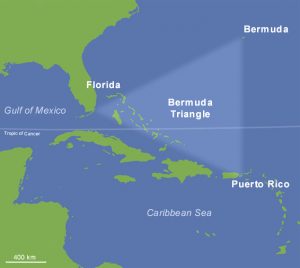Greetings and welcome to Dinosaur Bear!
So I’ve not been in a big blogging mood as of late, but back when I conceptualized the idea of “Coils” I simultaneously had the idea for a post where I shared interesting tidbits about commonly held beliefs that weren’t actually correct. Over time 1 point became 2, then 2 into 3, and so on and so forth until I had 10 things. As is natural for myself, 10 soon thereafter became 20, which is about twice the minimum number of items one needs to make a listicle. On that notion, are listicles even a thing anymore? I’m guessing so, though it seems like their heyday may have come and went (you could say the same thing about blogging too, I think).
Anyways, in this post I’m going to share 20 “Facts” which are not, ehm, in fact, facts – or which at the very least aren’t as clear-cut as common knowledge holds them to be. This isn’t a scientific discourse on these things so don’t expect a deep-dive into any of them, but rather a very surface level overview. Also, some of these are pretty well known anymore but I share them because almost every single one of these is something that at some point I personally believed and at least one of them I still struggle to conceptualize as incorrect. This isn’t a smarmy “I’m so smart” post, nope dear reader, almost all of these got me too at some point. So without further delay, let’s get into our list of…
20 Common “Facts” That Actually Are Not

1 – Napoleon Bonaparte was short
This one is pretty ubiquitous. I remember not only hearing this from family and peers, but being told this in primary school (and my K-12 schooling was at the most prestigious and rigorous school in the entire town I grew up in). Truth is, my bro Napoleon was roughly 5’7″ which was about 2″ above average for French males during Napoleon’s life (1769 – 1821). So how did History get this wrong, to the point that we have the “Napoleon Complex” named after him? The answer is simple, the British. To expand on that a little bit, given that they were, you know, at war with Napoleon the Brits had lots of reasons to not like him. So, what do you with a political figure who you don’t like? You make caricatures of them and spread lies about them. Thus the idea of a tiny little Napoleon was born.
2 – 8-Track Tapes predate Cassette Tapes
I can almost hear the collective “Taco you’re wrooooooooong” on this one. But nope, I am not wrong. In fact I am never, ever wrong (usually, sometimes, occasionally, maybe). Despite the fact that nearly everyone and their mother would say they had 8-Tracks prior to Cassettes, the truth of the matter is that Cassettes actually predate 8-Tracks by one year (1962 vs 1963). So why did 8-Tracks establish an early lead over their Cassette counterparts? Well that’s a bit beyond the scope of this list, but the basic gist of it is that the quality of early 8-Tracks was superior to Cassettes, but Cassettes quickly caught up and surpassed 8-Tracks to the point of rendering them essentially obsolete (a fate later served to Cassettes by Compact Discs, which were themselves later consumed and so on and so forth).

3 – A business must accept cash as payment
I honestly believed this one all the way up until law school. Obviously this is referring to the United States as I am a true American patriot and choose to pretend the rest of the world doesn’t exist (and is also flat, in it’s non-existence). I’d say you’ve probably heard something along this line before “They can refuse cards, but they can’t refuse cash” or a variant thereof. In truth there is absolutely no federal law that says a general business must accept cash as payment. Most do (though I’m seeing more and more that do not, especially at events and the like) as it’s more simple from an accounting and management standpoint (though also more risky in some regards). If you’re having trouble believing me on this one, take it from the Federal Reserve itself. Now, while “Cash is King” may not be as accurate as it once was, there are still some state and/or local laws on the books that require businesses to take cash, mostly because there are still 7.1 million households in the United States with no bank account. Of course this is further complicated because many of these laws only require the acceptance of cash, not particular denominations. So they might not be able to force you to pay use another method, but they could say “No pennies and no bills above $20.”

4 – Goldfish have terrible memories
I’m pretty sure I first heard this one while fishing, though it was in reference to fish in general not goldfish in particular. That said, I’ve since heard it used many times in reference to goldfish, with it normally being something along the lines of “That person has the memory of a goldfish.” The actual amount of time, per this “fact,” that goldfish can remember things is sometimes as low as 2 seconds. Funny thing is, that’s not only wrong, we’ve known it was wrong since the 1950s. Heck, even 9 year old children have proven this wrong. So just how long can your goldfish pal remember things? The truth is that we don’t entirely know, but it’s believed to be at least three months and possibly longer based on the conditioning involved. So if Mr. Goldfish sees you walking naked to get a midnight snack, he will likely remember that horror for the rest of his goldfish life.
This one is a bit darker, but it’s still incorrect. So in 1978 this dude named Jim Jones convinced (or outright forced) his followers, Peoples Temple, to commit suicide en masse. Over 900 of them ultimately died. You’ve probably seen the aerial pictures of the aftermath at some point or another. It’s not a pretty sight. Anyway, how this relates (or doesn’t relate, rather) to Kool-Aid is that Jones’s followers largely died from consuming a flavored mixture with some added cyanide and other drug goodness. There is a lot more to this situation that goes well beyond the scope of this post, but essentially what you have probably heard is that this mixture was Kool-Aid. It wasn’t. In fact it was Flavor Aid (specifically the grape flavor, as if I needed any more reason to hate nasty artificial grape flavors). Why the mistake? Hasty reporting and what we law-folk call issues of “generic trademark.” Basically because more people knew what Kool-Aid was than Flavor Aid most sources just said they drank Kool-Aid. Talk about bad advertising break for Kool-Aid and a lucky one for Flavor Aid. So next time you hear someone say “Drink the Kool-Aid” be really snobby and arrogant and insert a big old “ACHTUALLY” and then tell them about Flavor Aid as they ignore you.

6 – The tongue has different areas of taste buds for different flavors
*Insert internal Taco screaming here.* By lawd by LAWD I don’t like this one. I’m sure you’ve probably heard this “fact” at some point, that different areas of our tongue are responsible for different flavors. Oh yes, I have heard it too, many times. Heck, I was so convinced of its veracity that upon testing this “fact” many years ago I was utterly mind-blown when I moved a piece of candy around my mouth and wouldn’t you know it, it DID taste different in different places! This, dear friends, is a lesson in cognitive bias. The truth is that our tongues do not work like that and I had merely convinced myself it was true because I was so sure it was (it wasn’t). This is a falsity that is much older than me and goes all the way back to 1901 where a thesis by German scientist David Pauli Hänig was misinterpreted and gave us the concept of “taste zones.” This inaccuracy became common knowledge and even went on to be taught in schools (I was taught this in my illustrious aforementioned institution of education). But nope, it’s all wrong. Our tongue has no dedicated flavor zones (but maybe a Flavor Town) and instead relies on the buds to feed two nerves (the glossopharyngeal and the chorda tympani) collectively. I really don’t like world shattering revelations like these, though it is a lesson in how confidently incorrect we can be as humans.
With the proliferation of the internet came the simultaneous spread of the “realization” that the (in)famous Star Wars line “Luke, I am your father” doesn’t actually exist in the movie (The Empire Strikes Back, one of the best movies of all time, by the way, that’s a fact not an opinion). No, what Darth Vader actually says is “No, I am your father.” So how does this relate to Star Trek and Captain Kirk’s famous line of “Beam me up Scotty!” – well you can probably guess, given the Vader reference, that this line was never spoken in any Star Trek episode or film. Now, in fairness to inaccurate quotations the Star Trek cast did get somewhat close (i.e. “Beam us up, Scotty!” or simply “Beam me up”) which is what led to the misquotation. But still, it’s not a real quote which makes for some good pub trivia in my opinion. As an added bonus on this topic, Sherlock Holmes also never said “Elementary, my dear Watson.” Yes Taco is always here to ruin your fun.

8 – Jingle Bells is a Christmas song
Oh boy, this one is a doozy. I bet you could ask 10,000 people in the western world what holiday Jingle Bells was written for and 9,999 of them would say “Christmas.” They’d be wrong. The 1 person who got it right is also that know-it-all fellow who swerves in front of you then goes 10mph under the speed limit and takes the last Coke out of the refrigerator so no one even likes him. If you’re like me and count yourself as part of the 9,999 people who were wrong, then be amazed to learn that Jingle Bells was originally a Thanksgiving song, not a Christmas song. Oh yes, pick up the pieces of your exploded mind from the floor as this is quite true. So what happened here? Again this isn’t a post about the history of Jingle Bells but it goes back to a New England tradition of racing sleighs (with their jingling bells) around Thanksgiving. Christmas later cannibalized the song (in part thanks to Bing Crosby) but the original version of the song was known as The One Horse Open Sleigh and was written by James Pierpont for his Thanksgiving Sunday School class in 1850. Now, you can get a bit technical here and talk about the Jingle Bells we know not being precisely the same song as The One Horse Open Sleigh (this is true lyrically if not melodically and stylistically) but the truth of the matter is that Jingle Bells was a Thanksgiving tune before it was a Christmas one. Pretty soon Christmas will start in May, so next time you see Santa Claus sales in the heat of summer, remember that Christmas also stole Jingle Bells from you too.

9 – Carrots improve your night vision
Oh how vividly do I remember this one spreading around the lunch tables in elementary school. Originally the magical ingredient of carrots was stated simply as “Vitamin A” and then later in my life once we got more smart and stuff it was changed to “beta carotene.” Well, both of those things are good for your eyes but they are not going to improve your night vision, sadly. There is an edge case argument to be made here that involves people with legitimate nutritional deficiencies, but for most people munching on carrots isn’t going to do anything for their vision, let alone night vision (though carrots are good for you). So how did this “fact” get started? Well, much like with Napoleon the answer is simple, the British. During World War II the Allies had made significant improvements to their radar capabilities and were also switching over to red light-based instrument panels in their aircraft. The result? Much improved success in nighttime aerial missions and battles. In order to prevent the Germans from figuring out those things they spread disinformation about the British pilots eating loads of carrots and gaining night vision superpowers as a result. Now, we cannot say with certainty that the modern version of this “fact” goes back specifically to WWII disinformation, but there’s a good chance it does. So eat your carrots kids and you too can be a nighttime fighter pilot, no radar and/or improved instrument panels required.

10 – Saint Patrick was born in Ireland
This one kind of blew my mind, I cannot lie. If you ask a decent sample size of people to name the first three things that come to their mind when they think of Ireland there’s a good chance St. Patrick would be in there somewhere. Of course one doesn’t need to be born someplace to be strongly associated with it, but still, I definitely recall being told he was an Irish native. So where was he born? Just right across the Irish Sea in what was then Roman Britain. We don’t know specifically where he was born on Great Britain, some say Wales, some say England, and even a few sources point to Scotland (bearing in mind none of these places existed as we now know them back then, ~385 – ~461). But it’s certain he was born on Great Britain (then Roman) and served as a missionary to Ireland. This leads some people to claim he wasn’t Irish at all. For instance the first example I saw of this was an explicit “St. Patrick wasn’t Irish, he was Welsh.” Well that’s a bit of a leap because it gets into semantics about what makes one “Irish” and then Wales (as we know it) also didn’t exist at the time. Still though, this is one that makes for a good bit of trivia. Saint Patrick is a native son of Great Britian, not Ireland. On a similar note Saint Nicholas came from what’s now modern-day Turkey, not anyplace in western Europe. Oh history you so silly.

11 – Car tires protect you from lightning strikes
I see this one discredited more and more frequently these days, but when I was younger I was definitely told that tires are what protect you from lightning strikes in your car because of the rubber. Turns out that’s absolutely wrong. While it’s true that rubber is an excellent insulator against electricity, it does have it’s limits. Electricity follows the path of least resistance so in normal circumstances if there’s rubber vs. something more tasty, electricity will go the tasty route. But what about when the wraith of God comes down from the sky in a bolt of Jesus power? Well that’s a bit too much for the tires to insulate so they don’t do much for you. So what keeps you from instantly getting fried? The metal frame of your car. Remember how electricity likes to be lazy and follow easy routes? That metal frame is a nice and tasty Sunday stroll for the lightning bolt so it moves around you and then down into the ground through the tires whose rubbery powers are no match for a lighting strike. This is why things like convertibles or fiberglass frame vehicles don’t protect you from lightning as well (or at all). The tires have nothing to do with it, sorry Michelin Man. Fun fact about the Michelin Man though so he doesn’t feel too left out. His name is actually Bibendum.

12 – Fortune Cookies are Chinese
Ah those not-so-tasty little stale sugar crunchies you grab (or are given) a handful of at the local Chinese buffet so you can read your fortune in Engrish. If anything is Chinese it’s those little cookies, right? Wrong. Very wrong actually. Turns out what we now lovingly (or disgustedly, you do you) refer to as fortune cookies started being produced in Kyoto, Japan back in the 18th century. So first off you can see the issue here, Japan =/= China and each of those nations would be very quick to tell you that. But it gets even better. As Japan is wont to do they later exported those little cookie fortune tellers to America where they were sold as “fortune tea cakes” which more accurately reflected their original design as Japanese tea cakes. Then World War II happened and unlike our newfound love for magical carrots, the United States decided it didn’t like Japanese people so much and sent a lot of them to internment camps. Unsurprisingly this resulted in a bit of a public backlash against Japanese-themed things, so American entrepreneurs decided to exploit the sheer geographic genius of the average American and to rebrand Japanese fortune tea cakes as Chinese fortune cookies, because it still had that oriental appeal but without the whole “at war with their creator” shtick. The funnies continue though, because in modern China these “fortune cookies” are sometimes called “American fortune cookies” and they aren’t very common. So this one is just a whole lot of wrong.
We’ve all seen them. Those statues of a jolly and morbidly obese Buddha. You may have even heard that there were two Buddhas, one fat, one not. Well, turns out that the fatty isn’t even Buddha. This is probably old news for you actual Buddhists out there, but for yours truly I had always bought into this later myth, that the fat Buddha was still Buddha even if he wasn’t the Buddha. But no. Our jolly fat friend was a real person named Pu-Tai (or Hotei in Japan). Whereas the skinny Buddha, or OG Buddster as I call him, was Siddartha Gautama (who lived around ~600 BC in what is now Nepal). Pu-Tai on the other hand, was from what’s now China and lived from the 9th to 10th centuries (dying sometime around 916 or 917). To make things a little more complicated, Pu-Tai is also known as Budai. You can see the confusion here, especially for us heathen westerners. Buddha and Budai are not that far removed from one another stylistically. Of course the funny thing is that we have no definitive proof that Budai/Pu-Tai/Hotei was fat. He’s just historically been depicted that way. So there you have it. Next time you go into a Chinese restaurant to pick up your authentic American fortune cookies you can smile to yourself and say “That fat man isn’t Buddha, he’s Budai” and everyone will look at you and clap and cheer or maybe just stare at you, either or.

14 – The Forbidden Fruit is an apple
Picture the Garden of Eden. Picture Adam, Eve, their totes BFF serpent friend, and also the fruit tree that God put there explicitly to torture everyone involved. You probably just envisioned an apple. The chances are enormous that you’re wrong. First, the Hebrew bible doesn’t even call it an “apple” but merely a “fruit.” Second, if we put on our linguist caps the Hebrew word used in particular is “peri” which is a generic term for fruit, whereas “tapuach” is the word for apple. If the Bible wanted to call it an apple they had a perfectly adequate word to use, but instead it just used a generic term for fruit. But you might be thinking to yourself, well that doesn’t necessarily mean that it wasn’t an apple. This is true! It could have been an apple. But more likely given the context it was something more akin to a fig. Further working against the apple theory is that apples aren’t even from the Middle East but rather Central Asia. There was also no consensus around the forbidden fruit being an apple until John Milton wrote the famous Paradise Lost which for the record wasn’t even published until 1667. There’s a bit more to the historiography and translations than this, but the preponderance of the evidence points to the forbidden fruit being several other things before an apple. So keep eating those apples to keep the doctor away without concerns that you are summoning Satan.

15 – The Great Chicago Fire was started by a cow
This bit of knowledge was extremely commonplace in the Midwest where I grew up. I was told this by friends, family, and teachers alike. “Mrs O’Leary’s cow kicked over a lantern (or oil lamp) and started the conflagration of 1871.” Never mind that the O’Leary family denied this from the start and were also poor, Irish immigrants, and Catholic (which made them easy targets). In fact, the story of the cow-started fire was spreading before the flames were even extinguished, and if you’re even modestly aware of modern fire forensics you’ll know that a cause simply isn’t discovered that quickly. To really put the proverbial nail in the coffin of this story, the very Chicago Tribune reporter who popularized this story, Michael Ahern, retracted it as as a fabrication in 1893. Of course we want to believe what we want to believe, and some ferner’ Irish immigrant Catholic cow burning down Chicago was just too good to be true (and it was). But so prolific was this story that even in my childhood the cow basis was being spread as absolute fact. But it was more of a “fact” in reality. So what did cause the fire? We just don’t know and probably never will. There are theories, sure, but nothing definitive. But you can rest assured that poor Mrs. O’Leary’s cow had nothing to do with it.

16 – The color red enrages bulls
Just reading that sentence probably made you think of a Spanish matador engaged in combat with a bull in a sand-filled Mediterranean arena. You also probably pictured the matador using their red cape to bait and enrage the bull into making mistakes. It’s an easy presumption to make. Waving red thing equals angry charging bull. This of course ignores the fact that the matador is literally trying to kill the bull and that the bull has been bred for this purpose, but still, it’s an easily digestible “factoid.” The hiccup here is that bulls cannot even see red. If they were humans we’d say they have protanopia, or red-cone color blindness. So very clearly the red has nothing to do with the bull charging at the matador. This has been tested under variable conditions and the result is always the same, the bull doesn’t care about red things. So why does a bull so reliably charge at the matador’s flailing red cape? It’s even more simple than color. The bull perceives the billowing and failing and rapidly moving cape as a threat. This holds up under scrutiny as matadors often have a larger cape that isn’t red and yet bulls charge after it as well. Further, in a test a stationary red-clad individual was placed in an arena with a few “clowns” who were wearing no red but were scampering around as clowns tend to do. The bull went after the clowns, not the person wearing red. So wear bright red colors around bulls (i.e. brahmuses) all you like, just maybe don’t flail your arms around wildly.
17 – Ostriches stick their head in the sand
Three animal-themed “facts” in a row, we’re on a roll! For this one I don’t remember if I was ever explicitly told this “fact” or if I merely absorbed it through film, television, and artwork. I’m guessing you’ve seen it too, an ostrich with their head placed firmly into the earth for some reason or another. Well, turns out that this isn’t accurate. Ostriches categorically do not place their heads in the sand for the mere purpose of burying them because they are frightened, though I supposed if you were really brave (and stupid) you might be able to force one to do so. What’s fascinating about this lingering myth is that it goes all the way back to ancient Rome. So how did our Roman precursors get this so wrong to the point that it persisted for literally thousands of years? Well, it has to do with us being observant creatures but not always putting those observations to good use. See, ostriches do make holes in the ground into which they place their eggs. The earth becomes a de facto incubator of sorts. These holes are only deep enough to fit the eggs, but from time to time the ostrich will stick their head into the hole (ish, again these are fairly shallow) to adjust their precious eggs. Someone, we’ll call him Biggus Dickus, saw this at one point and thought the ostriches were literally burying their heads in the sand because they were frightened. Thus a “fact” was born that persists to this very day.
18 – Rust causes tetanus
When I was younger I came to have a deep fear of rusty metal objects, especially nails. These, I believed, contained a dark force known as tetanus which would bring me certain and utter doom should I be injured by them. When it comes to dumb children (i.e. me) that’s not a bad story to tell as there’s elements of truth to it. However, in the land of technicalities and “achktuallies” we have to definitively say that rust does not cause tetanus. No, iron oxide doesn’t even exist on the same level of biology as tetanus. Rust is a chemical reaction. Tetanus is a bacteria (clostridium tetani). So why the association? Well, this here is a classic babby’s first lesson in “correlation does not equal causation.” The truth is that the conditions that generate rust are also favorable to the growth of the tetanus bacteria. Further, because tetanus doesn’t like oxygen (to put it mildly), rust creates all these nice hiding places for the bacteria to thrive. Add in puncture wounds from something like a nail where the bacteria can go straight from nail to your body without oxygen exposure and you’re gonna have a bad time (or at the very least need to get that painful tetanus shot). But rust isn’t the sole dominion of tetanus. It’s also in soil (its favorite place), dust, and feces. Any of those things can carry tetanus. Thus, anything exposed to those things can also carry tetanus, fun! So the good news here is that exposure to rust doesn’t mean your doomed to that tetanus life, the bad news is that lots of other things you weren’t worried about can also spread it to you! Yay science!

19 – The Bermuda Triangle is especially dangerous
The spooky Bermuda Triangle is so well known that you could almost make an argument that an entire genre exists around triangular offshoots that were clearly inspired by it. When I was little I heard all sorts of crazy stories about things that had happened there, some of these were real stories, some were “inspired” by real stories, and some were “facts” (that is, entirely fictional). Whatever the particular story you first think of, the Bermuda Triangle lives in the cultural zeitgeist of spookiness for many of us. But is there really anything especially dangerous about the Bermuda Triangle? Well, no. Turns out if you map the area and then compare that data to other comparable mapped zones then, per the United States Coast Guard, the Bermuda Triangle is neither especially dangerous nor even particularly noteworthy insofar as rates of accidents and/or disappearances go. So this leads us to the question of where the Bermuda Triangle’s reputation comes from? Well I could probably write an entire post about that, but a lot of it just comes down to legends and mysticism surrounding the actual Island of Bermuda that fed into the story around the Bermuda Triangle. Have there been wrecks and disappearances, some of which are mysterious and unsolved? Absolutely. Do these occur at a rate which reinforces the idea behind the legend of the triangle? Not really.

20 – Frankenstein was a monster
I think this one is a lot more well known than it used to be, mostly because so many “intellectuals” like to use it as bit of an “I’m so smart” gotcha. But no, if its presence on the list doesn’t make this obvious, Frankenstein is not the big green creature that sets atop (or near the top) of the horror classics echelon. Rather, that creature is “Frankenstein’s monster.” In this case, the Frankenstein in well, Frankenstein, is a one Victor Frankenstein who is the scientist that creates the creature we all know and love. While Mary Shelley’s original story has all sorts of parallels to mythology and the dangers of “playing God” the point of this blog post is more in the realm of debunking the notion that Frankenstein was the monstrous creature we tend to associate with the name “Frankenstein.” Still though, I have to admit that part of why I put this on the list despite it being something more people know these days has to do with the sycophantic people who use this bit of trivia to make people feel dumb. Here I will recall one of my most favorite phrases I have come across on this matter: “Intelligence is knowing that Frankenstein isn’t the monster. Wisdom is knowing that Frankenstein is the monster.”
I’ve expressed my preference for odd numbers in the past, so it should be of no surprise that I had to make an odd-number listicle rather than an even-numbered one (even if that is unorthodox). But to give a bit more substance to this 21st item, it’s also less to do with being an odd number and more to do with the fact that this entry is a very personal one that most people probably have never even thought about. The point of concern? Irregardless. Ah if there was ever a word (and it is a word) that caused controversy among people with nothing better to do in their life, it’s irregardless. I have been chastised for using this word multiple times across my entire adult life. From family members, friends, colleagues, to academics. I have been instructed, as if the matter were settled, that irregardless is not a word. But here Taco gets the last laugh because frankly it’s my blog and I get to sort your comments to support my world view, but also because I’m correct. Irregardless was first recorded as a word in 1795 (words of Merriam-Webster, not me, but also me, because I’m right) and has remained in use ever since (and likely predated 1795 as that was simply the first known recorded use of the word). So, naysayers, no matter how much you seethe about “regardless” being the correct word, irregardless is a word – and a word that I’ll keep using just to spite you, irregardless of what you think. Ka-chow.
~~~~~
So there we go, a list of 20 (21) items. It got a bit longer than I was anticipating but that happens with about 90% of the posts I’ve ever written on this blog. Hopefully you found at least some of these points enlightening, I certainly know I learned a lot in researching them even if some of them were things I had been aware of for a while now. Stay big-brained out there dear friends!
Until next time,
-Taco






